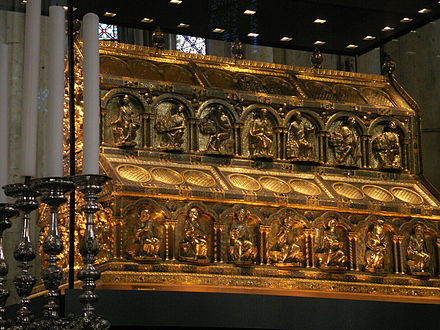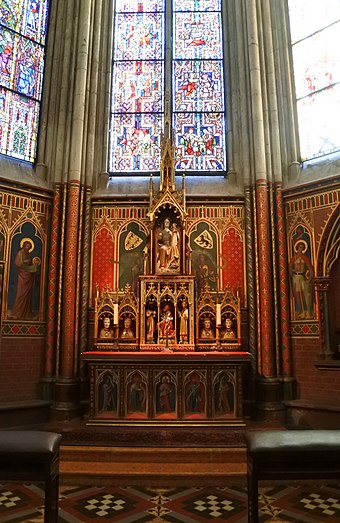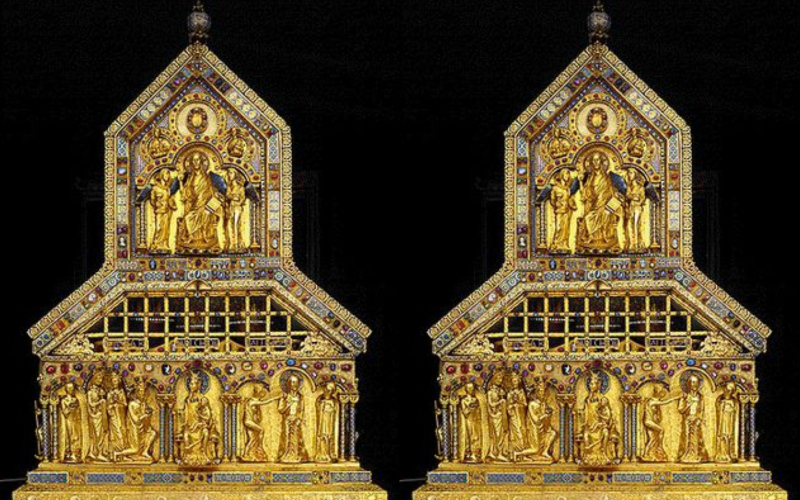The bones of the Biblical Magi, sometimes known as the Three Kings or the Three Wise Men, are supposedly housed at the Shrine of the Three Kings, Tomb of the Three Kings, or Tomb of the Three Magi.
The shrine is a sizable triple tomb that is gilded and ornamented and is positioned above and behind the high altar of the Cologne Cathedral in western Germany.

It was constructed between 1180 and 1225, roughly, and is regarded as the high point of Mosan art and the biggest reliquary in the Western world.
History
The “relics of the Magi” were originally kept at Constantinople, but Bishop Eustorgius I of Milan carried them to the city on an oxcart after receiving them from Emperor Constantine in 314 and entrusting him with their care.

Eight centuries later, in 1164, Holy Roman Emperor Frederick Barbarossa sent the Archbishop of Cologne, Rainald of Dassel, the Magi’s relics that he had taken from the Saint Eustorgio church in Milan. Since then, Cologne has seen a steady stream of pilgrims drawn by the remains.
Nicholas of Verdun, a well-known medieval goldsmith, designed some of the shrine’s components and got to work on it in 1180 or 1181.
It features ornate gold sculptures of the apostles and prophets as well as events from Christ’s life. The shrine was finished about 1225.
About 1199, King Otto IV presented the church of Cologne with three golden crowns that were allegedly crafted for the three wise men. The Cologne coat of arms still displays these three crowns, which stand for the Three Kings, because of the significance of the shrine and the cathedral for the later development of the city.
In order to house these significant relics, construction on the current Cologne Cathedral started in 1248. The cathedral is presently the largest Gothic church in northern Europe and took 632 years to build.
The shrine was opened on July 20, 1864, and inside were Philip I, Archbishop of Cologne, coins and human remains.
The bones were returned to the shrine after being wrapped in white silk.
Description
The Shrine of the Three Kings is 220 cm (87 in) long, 153 cm (60 in) high, and approximately 110 cm (43 in) wide.
A third tomb rests on the ridges of the two adjacent ones, giving the structure the shape of a basilica.
There is no visible space between the sarcophagi because the ends are completely covered. Wood serves as the primary structural material, and a gold and silver overlay is embellished with filigree, enamel, and more than a thousand diamonds and beads.
The latter contain several cameos and intaglio artworks, some of which are pre-Christian.











